How to Eat Like a Local in Beijing
Real foodies would hunt for local eats when traveling to any parts of the world. In Beijing, you will be spoiled by a rich variety of local foods such as Peking Duck, fried sauce noodle, fermented soybean milk, etc. Never should you just stick to some fine dinings, but knock some petty street food restaurants where authentic Beijing snacks could be found. If you are not an experienced expat in Beijing, it might be clueless to search for the real local eats. Here list the most representative dishes and popular food streets you do not want to miss when you're in Beijing.
- Peking Roast Duck
- Zhajiangmian (Fried Sauce Noodles)
- Jianbing (Chinese Thin Pancake)
- Donkey Burgers
- Lamb Hot Pot
One cannot succeed in a Beijing tour without eating the city's signature dish, the Peking Roast Duck. It's a traditional dish originated from imperial court of old Beijing, and it is might be the best-known method to make tasty ducks. Roasted over fruit wood, the duck is given an alluring color, crispy skin and juicy meat. Just one bite would let your mouth melt with great pleasure.
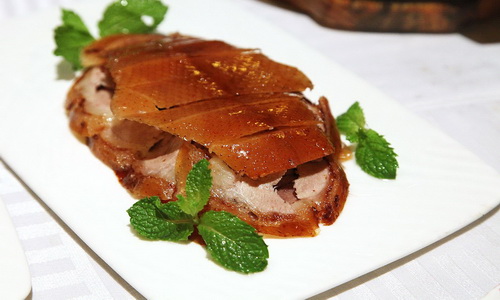
An array of duck restaurants are mushrooming in Beijing, among which the Quanjude, Dadong, Bianyifang, Liqun and Quanyaji are the best. You have plenty of choices varying from glitzy high-end brands to small back alley restaurants.
Beijing people in northern China usually have wheat-based noodle and bread as their daily staple foods. Especially for Zhajiang Noodle, Beijingers utterly cannot live without it. The noodles are made of wheat flour, with fermented soybean paste, minced pork and veggies like radish and cucumber. The perfect blend of sweet and salt sauces would hit your taste bud at every bite. Zhajiang Noodle is definitely a must-try of cheap price but superior dining experience.
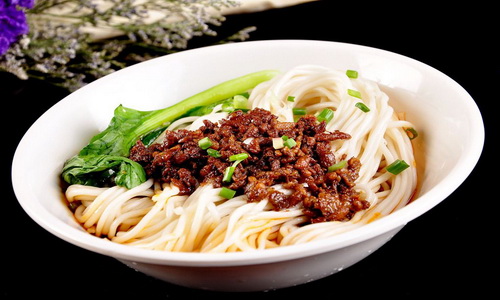
Jianbing is something like the crepes in western countries. It is one of the most-eaten breakfasts for workers across the country, not merely in Beijing. You can find many small street-side stalls selling Jianbing at a cheap price in the town. A standard Beijing-style Jiabing is usually made of a thin pancake topped with a fried egg, spring onions, lettuces and chili & hoisin sauces. The crepe is finally rolled to make a perfect combination of chewy textures and rich flavors.
Donkey burger is one of Beijing's must-try snacks that could be found across the city. Beijing people have a tradition to eat donkey meat, and one of the most common dishes is the donkey burger. It is more like a big crispy flatbread sandwich stuffed with tender donkey meat and some greens. Among all the donkey meat restaurants, the city-wide chain Wang Pangzi is generally viewed one of the best for the palatable donkey burgers.
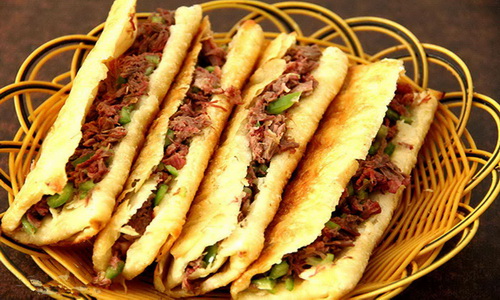
Mongolian Hot Pot is a delicious specialty in Beijing. Different from Chongqing hotpot, the broth of Beijing hotpot is mostly clear and mild. Heated with charcoal, the bubbling copper pot quickly boils the thin cuts of lamb and vegetables in the soup. Sesame paste, fermented soybean and garlic minces are served as the dipping sauce for the boiled lamb and veg. Dong Lai Shun, a time-honored brand, is the most worth-going restaurant in Beijing, with a great number of branches in the downtown.
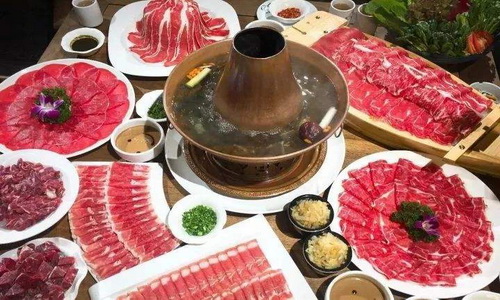
- Donghuamen Night Street
- Gui Jie (Ghost Street)
- Hutong Neighborhood
In the northwest of Wangfujing Street lies the busiest food street of Beijing, Donghuamen Night Market. Frequented by both locals and tourists, the food street is fully lined with food and drink stalls from nearly all parts of China. You could experience the delicacies and chaotic atmosphere just as you would expect from any snack markets. There you can find many sweet-tooth gourmets for the Western palates, such as Zhangjiang noodle and donkey sandwich, while there are also surprising native dining options would shatter your faith, like stinky tofu, fried scorpions and fried grasshopper for the adventurous foodies.
Tucked behind Beijing's Inner Dongzhimen Street, Gui Jie (aka Ghost Street) is a pretty buzzing food quarter that opens all night long in Beijing. Spanning across 1.5 km long, it is home of more than 100 restaurants and 150 stalls, offering a plethora of cuisines and snacks from different areas of China. The Ghost Street is best known for its spicy crayfish, kebab skewers and Sichuan hotpot, which are the after-work favorites of Beijing locals. Hanging out on Ghost Street is not just about the food, but also an amazing way to see Beijingers' life. Restaurant owners set up simple tables and seats at the street side, and wave their hands trying to canvass the passengers to stop at their stalls, while throngs of locals hover around waiting for a free table.
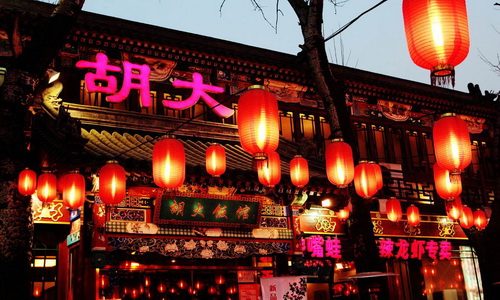
Looking for real local eats, you can consider to spend a few hours exploring the old hutong alleys where Beijing locals have lived for centuries. Wandering through the maze-like lanes, you will discover a lot of hidden eateries only insiders would be able to find. Clusters of small restaurants and street-side vendors survive long in the living quarters. You could venture one of them to have a bowl of fried sauce noodles or a pancake. In the famous Huguosi hutong neighborhood, you will be more likely to meet some odd but authentic dishes of Beijing, such as fried pork liver, deep-fried chitterling and braised bullfrog.
1. No matter in a bustling food quarter or an unknown hutong, you could always pick a right eatery by following the flocks of locals though sometimes you need to wait in line.
2. Going with an organized tour, your insider guide would make some great recommendations on eats and restaurants fitting your western palate.
3. Doing researches on Yelp and TripAdvisor will help you to find the best-rated Beijing local restaurants from the real dinner's reviews.
4. Most famous snacks of Beijing are blessed with a couple of time-honored brands, like Quanjude for Peking duck and Donglaishun for Beijing hot pot. It's never wrong to choose one of them.
5. Real foodies, or more precisely, bold food hunters would always like to try something new that they never had before. Dishes like fried pork liver, donkey burgers and fried crayfish are definitely worth a try.
6. Just like most cities of China, in Beijing's big shopping malls, you could usually find diverse and decent restaurants for your meals.









